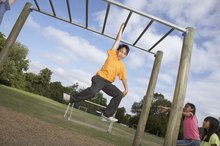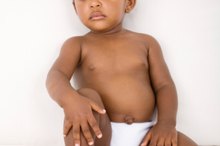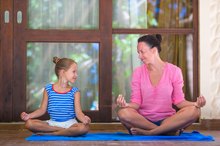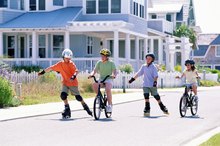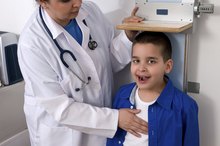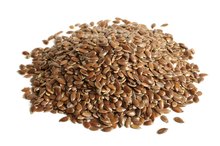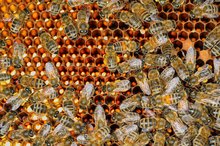Does Lifting Weights Make You Short?
Lifting weights is not a common exercise routine integrated into physical education programs for most children. Part of the reason for this is the widely held perception that lifting weights can damage growth plates in children's bodies, resulting in stunted growth. This fear has been greatly overstated, and that there may be no risk of stunting growth through normal weightlifting practices.
History
Weightlifting has a strong history of being considered unhealthy for children. According to "The New York Times," it has long been widely believed that weightlifting was futile for children and adolescents because they are unable to build muscle mass the same way adults do. Furthermore, the effects of weightlifting were believed to stunt growth plates in the body, preventing the child from developing to a normal size.
- Weightlifting has a strong history of being considered unhealthy for children.
- According to "The New York Times," it has long been widely believed that weightlifting was futile for children and adolescents because they are unable to build muscle mass the same way adults do.
Expert Insight
Strength Training for Five Year Old Kids at Home
Learn More
The effect of weightlifting stunting a child's growth has been debunked as a myth, according to a massive study published in "Pediatrics" in November 2010. This study analyzed 60 years' worth of data regarding children and weightlifting and concluded that there was no risk to a child's physical health when lifting weights. In fact, the benefits can be considerable.
Benefits
Lifting weights is an excellent way to develop muscle mass and build muscular endurance. It also helps strengthen the bones and improve bone density, and the exercise can help children regulate their body weight. Strength training exercises like lifting weights can help boost metabolism and promote good blood pressure and low cholesterol 1.
Alternatives
Causes of Vaginal Odor in Children
Learn More
Despite the research, you may be inclined to delay your child's introduction to weightlifting. Fortunately, there are other ways your child can enjoy the benefits of strength training without lifting weights 1. Resistance tubing is a form of exercise that uses resistance bands and other small exercise accessories to strengthen bones and muscle. You can also strength train by doing pushups, situps, leg squats and other exercises using only body weight.
- Despite the research, you may be inclined to delay your child's introduction to weightlifting.
- Fortunately, there are other ways your child can enjoy the benefits of strength training without lifting weights 1.
Considerations
While weightlifting may not pose a risk of stunting your child's growth, high levels of stress produced by intense weightlifting could cause damage to some parts of the body in younger children. This is exacerbated when the lifts are performed with improper form. While research lauds the benefits of weightlifting, it is important to follow proper form and procedures to avoid damage to young bone and muscle tissues.
Related Articles
References
- KidsHealth.org: Strength Training and Your Child
- "Pediatrics"; Effects of Resistance Training in Children and Adolescents: A Meta-Analysis; Michael Behringer, Dr. med. et al.; Nov. 2010
- Roveda, Eliana, et. Al. Effects of endurance and strength acute exercise on night sleep quality. International SportMed Journal. 2011; 12(3): 113-124.
- Kirk, Erik P., et. Al. Minimal resistance training improves daily energy expenditure and fat oxidation. Med Sci Sports Exerc. 2010; 41(5): 1122-1129.
- Magyari PM, Churilla JR. Association between lifting weights and metabolic syndrome among U.S. Adults: 1999-2004 National Health and Nutrition Examination Survey. J Strength Cond Res. 2012 Nov; 26(11): 3113-7.
- Cardoso, Crivaldo Gomes, et. Al. Acute and chronic effects of aerobic and resistance exercise on ambulatory blood pressure. Clinics (Sao Paulo). 2010; 65(3):317-325.
- Muir JM, Ye C, Bhandari M, Adachi JD, Thabane L. The effect of regular physical activity on bone mineral density in post-menopausal women aged 75 and over: a retrospective analysis from the Canadian multicentre osteoporosis study. BMC Musculoskelet Disord. 2013 Aug 23; 14: 253.
- Stone M, Stone Meg, Sands W. Psychological Aspects of Resistance Training. In: Principles and Practice of Resistance Training. Champaign, IL: Human Kinetics; 2009. p. 229-241.
Writer Bio
Jonathan Croswell has spent more than five years writing and editing for a number of newspapers and online publications, including the "Omaha World-Herald" and "New York Newsday." Croswell received a Bachelor of Arts degree in English from the University of Nebraska and is currently pursuing a Master's of Health and Exercise Science at Portland State University.
